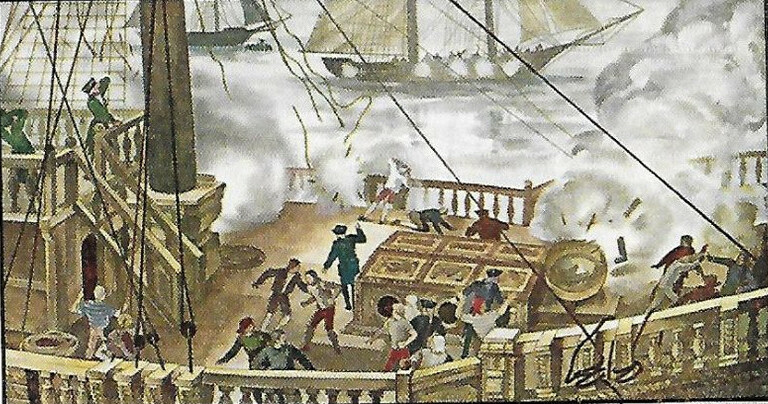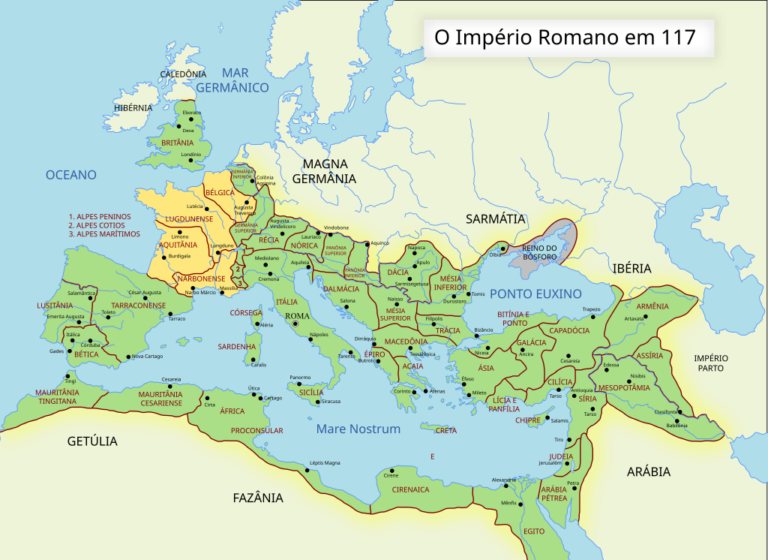
Landscape
War has been a defining force in human history, shaping civilizations, altering borders, and influencing cultures for generations. While some wars are brief but intense, others stretch across centuries, becoming deeply embedded in the historical identity of nations and peoples. This article explores some of the longest wars ever recorded, ranging from medieval conflicts between European kingdoms to ancient battles for dominance in Asia and the Middle East. Some of these wars, such as the Warring States Period in China and the Anglo-Scottish Wars, were marked by continual hostilities, while others, like the Three Hundred and Thirty-Five Years’ War, were long-lasting but largely symbolic.
Vietnamese–Chinese Wars (938–1979) – Over 1,000 years (Intermittent)
Although not a single continuous war, Vietnam and China fought numerous conflicts over a period of more than a millennium. Vietnam was under Chinese rule for over 1,000 years until 938, when it gained independence. However, border disputes and attempts at Chinese domination continued, leading to wars such as the Ming invasion of Vietnam (1406–1427) and the Sino-Vietnamese War in 1979. The resilience of Vietnam in resisting Chinese expansion was a defining factor in its national identity.
Reconquista (711–1492) – 781 years
The Reconquista was a series of battles fought between Christian kingdoms and Muslim states on the Iberian Peninsula (modern Spain and Portugal). The conflict began in 711 when Muslim forces from North Africa, known as the Moors, conquered most of Spain. Over centuries, Christian forces slowly reclaimed territory, culminating in the fall of the last Muslim stronghold, the Kingdom of Granada, in 1492 under Ferdinand II of Aragon and Isabella I of Castile. The war significantly shaped European and global history, leading to Spanish unification and the Age of Exploration.
Roman–Persian Wars (92 BCE–629 CE) – 721 years
One of the longest-running conflicts in history, these wars were fought between the Roman (and later Byzantine) Empires and the Persian Parthian and Sassanian Empires. The wars revolved around control over the Near East, especially the regions of Mesopotamia, Armenia, and Syria. The struggle saw multiple invasions, shifting alliances, and devastating battles, only ending when the Byzantine Empire and the Sassanian Empire were both weakened by continuous warfare and the rise of Islam, which led to the Arab conquests.
Byzantine–Bulgarian Wars (680–1355) – 675 years
The Byzantine–Bulgarian Wars were a series of conflicts between the Byzantine Empire and various Bulgarian states over control of the Balkans. The wars began in 680 when the First Bulgarian Empire, under Asparuh, established itself south of the Danube, defeating the Byzantines and forcing them to recognize Bulgaria as an independent state. Over the centuries, the balance of power shifted multiple times. The Byzantines, under emperors like Basil II, managed to subjugate Bulgaria in 1018, but the Bulgarian state re-emerged in 1185 as the Second Bulgarian Empire. Conflicts continued until 1355 when the Ottoman Empire began dominating the Balkans, leading to the decline of both the Byzantines and Bulgarians as independent powers.
Anglo-French Wars (1202–1815) – 613 years (Intermittent)
The Anglo-French conflicts spanned over six centuries, comprising multiple wars, including the Hundred Years’ War (1337–1453), the Seven Years’ War (1756–1763), and the Napoleonic Wars (1803–1815). These wars were fought over territorial disputes, trade dominance, and political power in Europe and around the world. The rivalry eventually ended with Britain’s victory over Napoleon Bonaparte at the Battle of Waterloo in 1815, solidifying British global supremacy in the 19th century.
Roman-Germanic Wars (113 BCE–476 CE) – 588 years
The Roman-Germanic Wars were a long series of conflicts between the Roman Republic, later the Roman Empire, and various Germanic tribes, including the Cimbri, Goths, Franks, and Vandals. The wars began in 113 BCE with Rome’s battles against migrating Germanic tribes like the Cimbri and Teutones, culminating in major Roman defeats at battles like Arausio (105 BCE). As the Roman Empire expanded, it attempted to conquer and control the lands beyond the Rhine and Danube rivers. One of the most devastating losses occurred at the Battle of the Teutoburg Forest in 9 CE, where three Roman legions were annihilated. During the 3rd and 4th centuries, increased Germanic incursions weakened Rome. The final blow came when the Visigoths sacked Rome in 410 CE and the Western Roman Empire ultimately fell in 476 CE due to repeated invasions by groups such as the Vandals, Ostrogoths, and Huns.
Arab–Byzantine Wars (629–1180) – 551 years
The Arab–Byzantine Wars were a series of prolonged conflicts between the Byzantine Empire and various Muslim caliphates, starting with the expansion of the Rashidun Caliphate in the early 7th century and lasting until the late 12th century. The wars began in 629, shortly before the Prophet Muhammad’s death, when Arab forces raided Byzantine territories. Following the decisive Battle of Yarmouk in 636, the Byzantines lost Syria, Palestine, Egypt, and North Africa to the Arabs. Despite these losses, the Byzantine Empire managed to hold onto its core territories in Anatolia and launched counteroffensives, including the use of Greek fire to repel the Arab sieges of Constantinople (674–678 and 717–718).
Yaqui Wars (1533–1929) – 396 years
The Yaqui Wars were a series of conflicts between the indigenous Yaqui people of northern Mexico and Spanish, later Mexican, forces over land, autonomy, and resistance to colonization. The wars began in 1533 when Spanish explorers first encountered the Yaqui in what is now the Mexican state of Sonora. The Yaqui fiercely resisted Spanish rule, maintaining their independence through guerrilla warfare. Throughout the colonial period, Spain attempted to pacify the Yaqui through both military force and religious missions. Following Mexican independence in 1821, conflicts reignited as the Mexican government sought to control Yaqui territory and resources. The late 19th and early 20th centuries saw brutal campaigns against the Yaqui, including forced relocations, mass executions, and enslavement in sugar plantations in Yucatán. Despite suffering heavy losses, the Yaqui resistance persisted into the 1920s, with the final skirmishes occurring in 1929.
Moroccan–Portuguese Conflicts (1415–1769) – 354 years
The Moroccan–Portuguese conflicts were a series of wars and battles fought between the Kingdom of Portugal and various Moroccan dynasties over control of strategic coastal cities and trade routes in North Africa. The war began in 1415 with the Portuguese conquest of Ceuta, a key trade hub controlled by Muslims. Over the next two centuries, Portugal continued to establish fortified outposts along the Moroccan coast, including Tangier, Mazagan, and Agadir. However, Moroccan resistance was fierce, especially under the Saadi dynasty, which successfully recaptured several cities, including the decisive Battle of the Three Kings in 1578, where Portugal’s king, Sebastião I, was killed. By 1769, the Portuguese withdrew entirely from Morocco after losing their last stronghold, Mazagan, to the Alaouite dynasty.
Russo-Turkish Wars (1568–1918) – 350 years
The Russo-Turkish Wars were a series of twelve conflicts fought between the Russian Empire and the Ottoman Empire over control of Eastern Europe, the Black Sea, and the Caucasus. The first war began in 1568 when the Ottomans attempted to take Astrakhan from Russia but failed. Over the centuries, the wars were marked by fluctuating power dynamics. Russia, under leaders like Peter the Great and Catherine the Great, gradually expanded southward, seizing key territories such as Crimea in 1783 and pushing into the Balkans. The wars played a crucial role in the decline of the Ottoman Empire, culminating in World War I, during which the two empires fought once again. Following the collapse of both the Russian and Ottoman empires, the Treaty of Brest-Litovsk (1918) and the dissolution of the Ottoman Empire effectively ended the centuries-long conflict.
Dano-Swedish Wars (1470–1814) – 344 years
The Dano-Swedish Wars were a series of conflicts fought between Denmark–Norway and Sweden over control of Scandinavia, particularly in the Baltic Sea region. Rivalry between the two kingdoms started in 1470, after Sweden sought independence from the Kalmar Union, which had united Denmark, Norway, and Sweden under a single monarch. Wars erupted frequently, with Sweden eventually breaking free in 1523. Over the following centuries, Sweden and Denmark clashed repeatedly, particularly during the Northern Wars (1655–1660) and the Great Northern War (1700–1721), where Sweden’s power peaked before its decline. The final conflict between the two nations took place during the Napoleonic Wars, ending in 1814, when Denmark was forced to cede Norway to Sweden under the Treaty of Kiel.
Three Hundred and Thirty-Five Years’ War (1651–1986) – 335 years
The Three Hundred and Thirty-Five Years’ War was a bizarrely long but completely bloodless conflict between the Netherlands and the Isles of Scilly, a small archipelago off the coast of England. The war allegedly began in 1651 during the English Civil War, when the Dutch, allied with the Parliamentarians, declared war on the Royalist-controlled Scilly Isles for harboring English privateers attacking Dutch ships. However, the conflict was quickly forgotten, and no battles were fought. A historian in 1985 rediscovered that the war had never been formally ended. As a result, in 1986, Dutch and Scillonian representatives signed a peace treaty, officially ending the longest “war” in history with no casualties.
Ottoman–Persian Wars (1514–1823) – 309 years
The Ottoman–Persian Wars were a series of conflicts between the Ottoman Empire and various Persian dynasties, primarily the Safavids, Afsharids, and Qajars, over territorial control in the Middle East and the Caucasus. The wars began in 1514 with the Battle of Chaldiran, where the Ottomans, under Selim I, decisively defeated the Safavid Empire and gained eastern Anatolia and parts of Mesopotamia. This initiated a centuries-long struggle over regions such as Iraq, Armenia, Azerbaijan, and Georgia. Conflicts continued throughout the 16th and 17th centuries, with the Ottomans capturing Baghdad in 1638 under Murad IV. However, shifting power dynamics saw Persia regaining some territories under Nader Shah in the 18th century. The wars culminated in 1823, when the Treaty of Erzurum established a relatively stable border.
Burmese-Siamese Wars (1547–1855) – 308 years
The Burmese-Siamese Wars were a series of conflicts between the Kingdom of Burma (modern-day Myanmar) and the Kingdom of Siam (modern-day Thailand) over dominance in mainland Southeast Asia. The wars began in 1547, when the Taungoo Dynasty of Burma, under Tabinshwehti, attempted to conquer Siam. One of the most famous battles occurred in 1569, when Burma captured Ayutthaya, the capital of Siam, marking the height of Burmese expansion.
Han–Xiongnu War (200 BCE–91 CE) – 290 years
The Han–Xiongnu War was a prolonged conflict between the Han Dynasty of China and the Xiongnu, a powerful nomadic confederation in the Mongolian steppes. The war began in 200 BCE, when the Xiongnu, led by Modu Chanyu, defeated the Han forces at the Battle of Baideng. In response, the Han initially pursued a policy of appeasement through marriage alliances and tributes. However, under Emperor Wu of Han, the Han adopted an aggressive military strategy, launching multiple expeditions deep into Xiongnu territory. By the 1st century BCE, Han generals like Wei Qing and Huo Qubing achieved significant victories, driving the Xiongnu northward.
Arauco War (1536–1818) – 282 years
This war was fought between Spanish colonizers and the indigenous Mapuche people in present-day Chile. The Mapuche fiercely resisted Spanish rule, using guerrilla warfare tactics to hold off European advances. Despite repeated Spanish campaigns to subjugate them, the Mapuche maintained control over large parts of their homeland. The conflict lasted until Chile gained independence from Spain, after which the Chilean government continued military campaigns against the Mapuche.
Osman-Habsburg Wars (1526–1791) – 265 years
This long conflict pitted the Ottoman Empire against the Habsburg Monarchy and later the Austrian Empire. The war was mainly centered on control over Central Europe, particularly Hungary and the Balkans. The Ottomans made significant advances into Europe, even reaching the gates of Vienna in 1529 and again in 1683. Over the centuries, the Habsburgs gradually pushed back Ottoman influence, culminating in a series of treaties that solidified Austria’s dominance in Eastern Europe.
Byzantine–Seljuk Wars (1048–1308) – 260 years
This conflict was fought between the Byzantine Empire and the Seljuk Turks over control of Anatolia (modern Turkey). The war began as the Seljuks, a Turkic Muslim dynasty, expanded into Byzantine territory, dealing a crushing blow to the empire at the Battle of Manzikert in 1071. This led to the gradual Turkification of Anatolia and was one of the factors leading to the Crusades. The war ended as the Seljuks fragmented and were later conquered by the Ottoman Empire.
Anglo-Scottish Wars (1296–1547) – 251 years
The Anglo-Scottish Wars were a series of conflicts between the Kingdom of England and the Kingdom of Scotland over independence, territorial disputes, and dynastic claims. The wars began in 1296, when Edward I of England invaded Scotland, leading to the famous resistance of leaders such as William Wallace and Robert the Bruce. The wars culminated in 1547 with the Rough Wooing, a conflict in which England attempted to force a marriage between Mary, Queen of Scots, and the English heir. This marked the final phase of military conflict before the eventual union of the crowns in 1603.
Chechen–Russian Conflict (1785–2017) – 232 years
The Chechen–Russian Conflict is a centuries-long struggle between Russian and Chechen forces over control of the North Caucasus, involving multiple wars, uprisings, and insurgencies. The conflict began in 1785, when Sheikh Mansur, a Chechen leader, led an armed resistance against Russian expansion into the Caucasus. After the fall of the Soviet Union, the conflict reignited in the First Chechen War (1994–1996) and Second Chechen War (1999–2009), with devastating consequences for Chechnya. Though large-scale war ended in 2009, sporadic insurgencies persisted until 2017.
Warring States Period (453 BCE–223 BCE) – 230 years
The Warring States Period was an era of intense warfare, political intrigue, and military innovation in ancient China, as rival states fought for supremacy following the decline of the Zhou Dynasty. The period began in 453 BCE, when the powerful Jin state fractured into three rival states—Han, Zhao, and Wei—leading to widespread conflict across China. Over time, seven major states—Qin, Chu, Qi, Yan, Han, Zhao, and Wei—competed for dominance. During this period, warfare became more sophisticated, with developments such as iron weaponry, large standing armies, and strategic fortifications. The wars culminated in 223 BCE, when the Qin state, under Qin Shi Huang, conquered the last of its rivals, unifying China and establishing the Qin Dynasty, the first imperial dynasty of China.
……
Similar articles:
List of the 20 Bloodiest Wars in Europe
List of U.S. Wars Ranked by Total Fatalities
The Bloodiest Conflicts in Asia – Chang’an Academy of History and Archaeology




